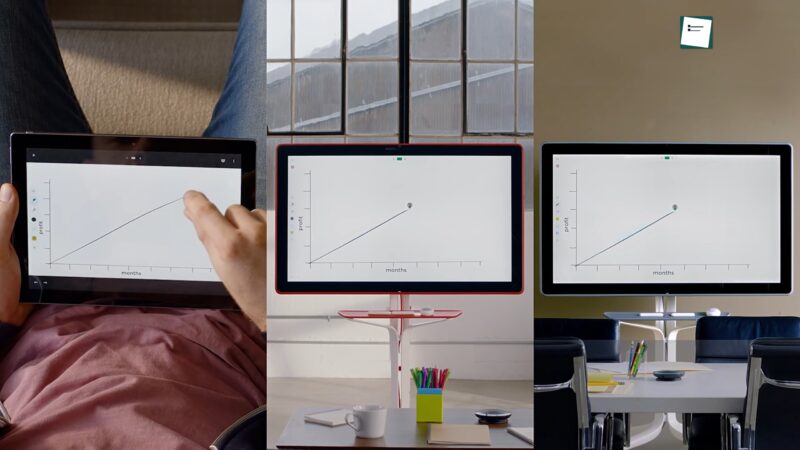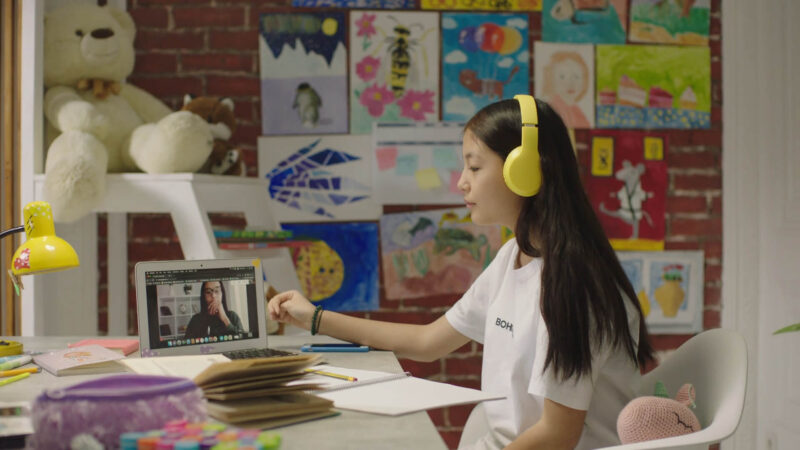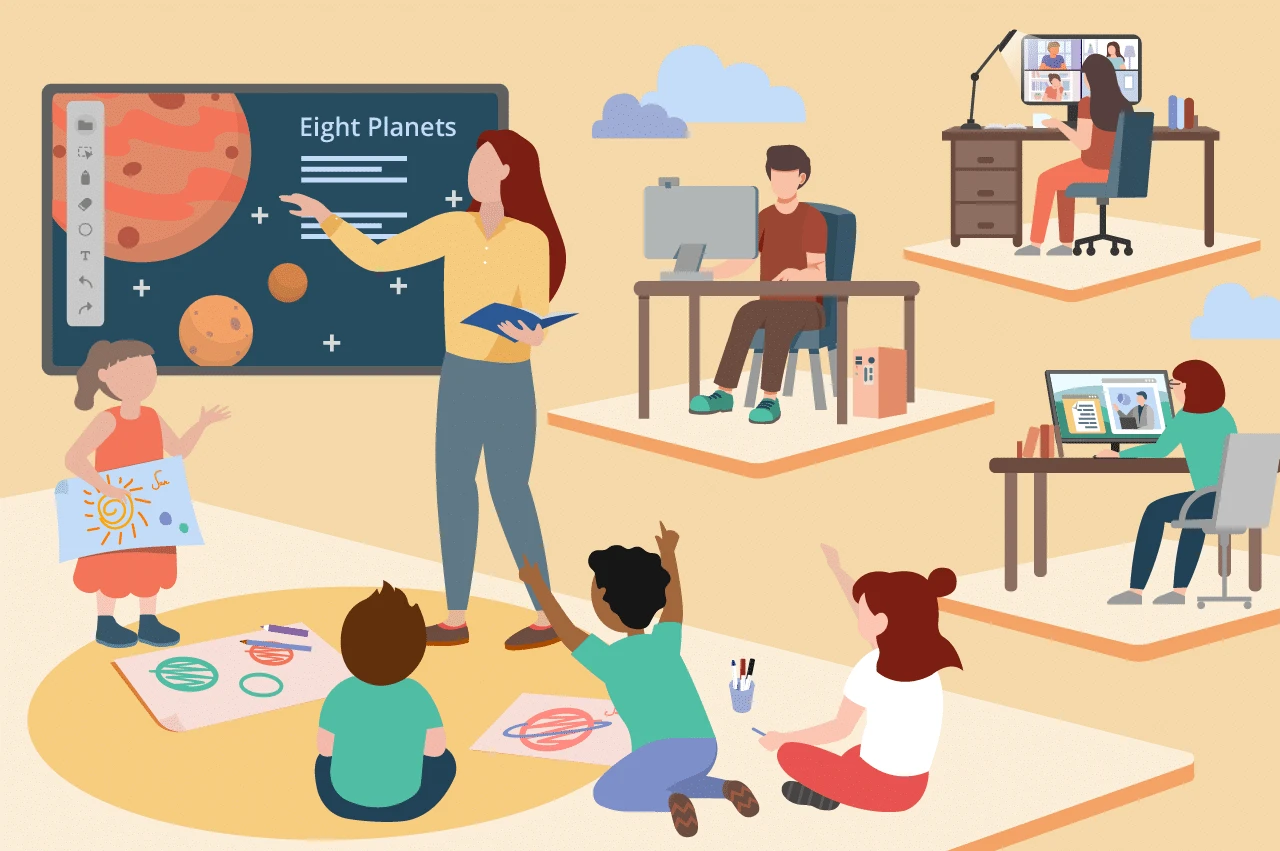To make the most of virtual classrooms, educators should concentrate on smart classroom design, picking the right blended learning model, and building a positive learning culture.
By regularly refining their approach, teachers can create inclusive, personalized, and engaging learning environments that boost academic performance and student well-being.
Creating an Engaging Virtual Classroom Experience
Choosing the Right Platform

When choosing the platform, consider factors such as ease of use, integration with other tools, pricing structure, and available features.
It is critical to ensure that the platform fulfills the primary needs of your learning objectives and can accommodate the varying technical capabilities of students and instructors.
Creating Engaging Content
Using a combination of asynchronous and synchronous learning methods, instructors can create a more engaging blended learning environment.
Some popular strategies for improvement of participation include flipped classrooms, video lessons, and interactive activities that encourage students to explore topics on their own. Incorporating multimedia content such as video, audio, and images can further enrich the learning experience.
Here are some key components to consider when creating content for virtual classrooms:
- Lesson structure: Break lessons down into easily digestible sections that encourage active learning.
- Clarity: Ensure content is easy to understand and concise.
- Interactivity: Involve students through discussions, quizzes, and group activities.
- Feedback: Provide timely feedback to encourage self-improvement.
Implementing Interactive Tools

By incorporating interactive tools in virtual classrooms, educators can foster better collaboration and communication among students. Tools may include group chats, breakout rooms, real-time polling, and virtual whiteboards. These interactive features are crucial in promoting engagement, retaining students’ attention, and fostering a sense of community within the blended learning environment.
Remember, when implementing interactive tools, consider the following points:
- Accessibility: Ensure that all students can access and utilize the tools without difficulty.
- User-friendly: Choose tools that are simple and straightforward to use.
- Integration: Opt for tools that can be seamlessly incorporated into the virtual classroom platform.
- Adaptability: Select tools that can be easily tailored to the specific needs and learning objectives of your class.
Encouraging Student Participation
One of the key aspects of virtual teaching is to actively engage students in the learning process. Here are some strategies to encourage student participation:
- Create a welcoming environment: Set clear expectations for engagement and establish a safe and inclusive virtual classroom.
- Utilize interactive tools: Incorporate polls, quizzes, and collaboration tools like breakout rooms to encourage active participation during lessons.
- Build peer-to-peer connections: Encourage students to collaborate on projects or assignments, as well as engage in online discussions. This can help foster a sense of community and mutual support.
- Promote self-directed learning: Allow students to have some control over their learning, enabling them to choose the pace and path of their online education.
Providing Timely Feedback

Effective and timely feedback is crucial for maximizing the potential of virtual teaching. Here are some best practices for providing feedback in a virtual classroom:
- Set clear expectations: Clearly communicate the expectations for assignments, as well as the criteria by which they will be evaluated.
- Provide prompt feedback: Aim to give constructive feedback within a reasonable time frame to help students improve their performance in future tasks.
- Use various feedback formats: Offer both written and verbal feedback, and consider using multimedia tools like screen-sharing or video recordings to showcase examples or clarify points.
- Encourage self-assessment: Provide opportunities for students to reflect on their own work, helping them develop critical thinking and self-regulation skills.
By implementing these strategies, educators can create an effective and engaging virtual learning environment for students in blended and online programs.
Tracking Progress Through Analytics

By analyzing data such as engagement rates, time spent on tasks, and quiz scores, educators can identify patterns and intervene when necessary.
The UNICEF study suggests that digital learning solutions that improve teacher instruction tend to be most effective in improving learning outcomes.
To use analytics effectively, it’s essential to:
- Define learning goals: Clearly identify the objectives the students are expected to achieve.
- Track relevant data: Monitor metrics that are closely related to the learning goals.
- Analyze progress: Regularly assess individual and group performance against the learning goals.
- Take action: Implement interventions or changes as needed to support student learning and achievement.
Conclusion
Leveraging virtual classrooms effectively requires a thoughtful approach to classroom design, platform selection, content creation, and student engagement.
By focusing on these key areas, educators can create dynamic and inclusive learning environments that enhance academic performance and student well-being.
Related Posts:
- Top Blended Learning Models for Effective Education…
- Blended Learning vs. E-Learning - What is a Better Option
- Step-by-Step Guide to Creating a Blended Learning Curriculum
- Top 10 Online Learning Platforms for Blended Education
- Essential Tools for Digital Literacy in a Blended…
- Interactive Activities to Enhance Engagement in…







